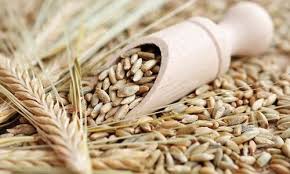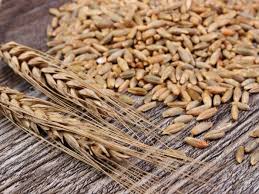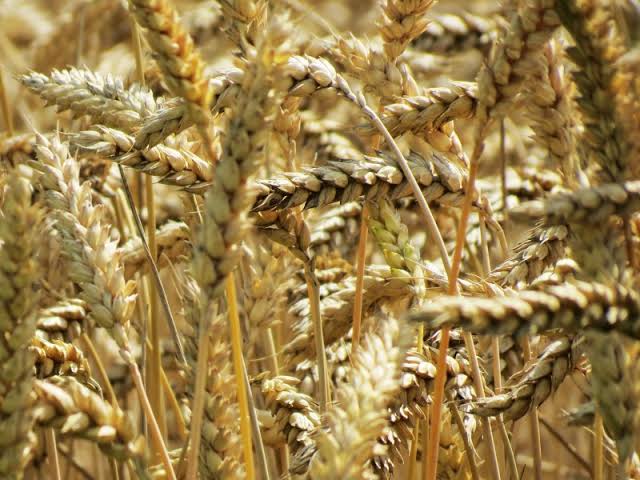Rye, a hearty grain with a rich history, has been a staple in human diets for centuries. It is a type of cereal grain that belongs to the wheat family and is cultivated in various parts of the world. Known scientifically as Secale cereale, rye is valued not only for its nutritional content but also for its versatility in culinary applications.
In the realm of agriculture, rye stands out for its resilience and adaptability to diverse climates. Its hardiness allows it to thrive in colder regions where other grains might struggle. This characteristic has made rye a crucial crop in countries with harsh winter conditions, contributing to food security and agricultural sustainability.
When it comes to nutrition, rye boasts an impressive profile. It is an excellent source of dietary fiber, providing a substantial portion of the recommended daily intake. Fiber is crucial for digestive health, promoting regular bowel movements and aiding in the prevention of various gastrointestinal issues.
Moreover, rye contains essential nutrients such as iron, magnesium, phosphorus, and B-vitamins, contributing to overall well-being. The inclusion of rye in a balanced diet can help support energy metabolism, maintain bone health, and enhance the body’s ability to transport oxygen.
In the culinary world, rye plays a starring role in a variety of dishes. One of the most well-known products is rye bread, cherished for its robust flavor and dense texture. Rye flour, derived from the grain, is also used in the preparation of other baked goods like crackers and pastries.
In addition to its role in baking, rye is a key ingredient in the production of certain alcoholic beverages. Rye whiskey, for example, is a distinct type of whiskey with a characteristically bold and spicy flavor. The unique taste of rye whiskey is attributed to the grain’s composition and the fermentation and distillation processes involved in its production.
Beyond its nutritional and culinary significance, rye has cultural and historical importance. Traditional folk tales and customs often celebrate the harvest of rye, linking the grain to cultural identity and community rituals. In some regions, rye has been a symbol of sustenance and endurance through challenging times.
Additionally, rye is a remarkable grain that has woven itself into the fabric of human civilization. From its agricultural resilience to its nutritional benefits and culinary versatility, rye continues to be a cherished component of diets and cultures worldwide. As we appreciate the simplicity of this grain, let us also recognize the profound impact it has had on our tables and traditions throughout the ages.
Read Also: How to Farm and Care for Antarctic krill (Euphausia superba)
Benefits of Rye

Rye offers a plethora of health benefits that contribute to overall well-being. Here are some key advantages associated with incorporating rye into your diet:
1. Rich in Fiber: Rye is an excellent source of dietary fiber, promoting digestive health by preventing constipation and supporting regular bowel movements.
2. Nutrient-Packed: Packed with essential nutrients such as iron, magnesium, phosphorus, and B-vitamins, rye contributes to various bodily functions, including energy metabolism and bone health.
3. Heart Health: The fiber content in rye may help lower cholesterol levels, reducing the risk of heart disease. Additionally, rye contains compounds that may positively influence cardiovascular health.
4. Blood Sugar Regulation: Rye has a lower glycemic index compared to some other grains, potentially helping to regulate blood sugar levels. This can be beneficial for individuals with diabetes or those aiming to manage their blood sugar.
5. Weight Management: The fiber in rye provides a feeling of fullness, aiding in weight management by reducing overall calorie intake.
6. Antioxidant Properties: Rye contains antioxidants that help neutralize free radicals in the body, contributing to cellular health and potentially reducing the risk of chronic diseases.
7. Culinary Versatility: Rye’s versatility in the kitchen allows for the creation of a variety of delicious and nutritious foods, such as hearty bread, crackers, and wholesome cereals.
8. Sustainable Agriculture: Rye is known for its resilience, making it a sustainable crop that can thrive in diverse climates. Its cultivation contributes to agricultural sustainability and food security.
9. Cultural and Historical Significance: Beyond its nutritional value, rye holds cultural importance, often being part of traditions and celebrations that connect communities to their agricultural roots.
10. Distinctive Flavor in Alcoholic Beverages: Rye’s unique flavor profile makes it a key ingredient in the production of distinctive alcoholic beverages, such as rye whiskey, adding a spicy and robust character to these spirits.
Incorporating rye into a balanced diet can be a flavorful and nutritious way to support various aspects of health, from digestive well-being to heart health and beyond.
Read Also: How to Farm and Care for Blue Swimming Crab (Portunus pelagicus)
Uses of Rye

Rye finds diverse applications across various domains, from culinary delights to industrial processes. Here are some notable uses of rye:
1. Baking Rye Bread: One of the most popular uses of rye is in the production of rye bread. Its distinct flavor and dense texture make rye bread a favorite among those seeking a hearty and flavorful alternative to traditional wheat bread.
2. Culinary Delights: Rye flour is utilized in the creation of a range of baked goods, including crackers, muffins, and pancakes. Its unique taste adds a pleasant depth to these culinary creations.
3. Whiskey Production: Rye serves as a key ingredient in the production of rye whiskey. The grain’s distinctive flavor profile contributes to the robust and spicy character of this particular type of whiskey.
4. Animal Feed: Rye is used as a component in animal feed, contributing to the nutrition of livestock. Its inclusion in feed formulations supports the health and well-being of animals.
5. Cover Crop in Agriculture: Due to its hardiness and ability to grow in challenging conditions, rye is often used as a cover crop in agriculture. It helps prevent soil erosion, suppress weeds, and improve soil structure.
6. Flour Production: Rye flour, derived from the grain, is a key ingredient in the production of various baked goods. It adds a unique flavor and texture to recipes, enhancing the overall culinary experience.
7. Alcohol Fermentation: Rye can be fermented to produce alcoholic beverages other than whiskey. Its sugars can be converted into alcohol through fermentation, leading to the creation of different types of spirits.
8. Traditional Folklore and Rituals: In some cultures, rye holds cultural significance and is incorporated into traditional folklore and rituals. Celebrations and ceremonies may involve the cultivation and harvest of rye as part of community traditions.
9. Bioenergy Production: Rye straw, a byproduct of rye cultivation, can be used in bioenergy production. It serves as a renewable resource for generating heat or producing biofuels.
10. Soil Improvement: When used as a cover crop or as part of crop rotation, rye contributes to soil improvement. Its root system helps enhance soil structure and fertility.
From the kitchen to the fields, rye’s versatility makes it a valuable commodity with applications that extend far beyond the culinary realm. Its adaptability and usefulness in various industries underscore its significance in both traditional and modern contexts.
How to Grow and Care for Rye
Growing rye can be a rewarding experience, whether you’re cultivating it for its grains, as a cover crop, or for its straw. Here’s a basic guide on how to grow and care for rye:
1. Selecting the Right Variety: Choose a rye variety that suits your purpose. There are winter and spring varieties, each with specific planting times and growth characteristics. Winter rye is typically planted in the fall and harvested in late spring or early summer, while spring rye is sown in the spring and harvested in late summer.
2. Site Selection: Rye thrives in well-drained soil with a slightly acidic to neutral pH. Ensure the chosen site receives ample sunlight. While rye is hardy and can tolerate various conditions, it prefers cooler temperatures.
3. Planting: Follow the recommended planting depth and spacing for the specific rye variety you’ve chosen. Typically, seeds are sown directly into the soil. For cover cropping, broadcasting the seeds evenly over the area is common.
4. Watering: Rye has moderate water requirements. Provide consistent moisture during the germination and early growth stages. Once established, rye is relatively drought-tolerant.
5. Fertilization: Rye generally doesn’t require high levels of fertilizer. A soil test can help determine if any specific nutrients are lacking. Organic matter, such as well-rotted compost, can enhance soil fertility.
6. Weed Control: Rye’s dense growth helps suppress weeds. However, during the early stages, it’s essential to manage weed competition. Mulching can also be beneficial.
7. Disease and Pest Management: Rye is relatively resistant to pests and diseases. However, practicing crop rotation and maintaining good garden hygiene can help prevent issues.
8. Harvesting: The harvest time depends on the intended use of rye. For grains, harvest when the seed heads are fully formed but not overly mature. For cover cropping, mow or incorporate the rye into the soil before it goes to seed to prevent self-sowing.
9. Straw Utilization: If you’re growing rye for straw, allow the plants to mature fully before harvest. The straw can be used for mulching, livestock bedding, or even as a material for crafts.
10. Crop Rotation: To prevent disease and improve soil health, practice crop rotation. Avoid planting rye or other cereals in the same area year after year.
11. Storage: If you’ve harvested rye grains, store them in a cool, dry place. Proper storage helps prevent mold and insect infestations.
By following these general guidelines, you can successfully grow and care for rye, whether for its grains, as a cover crop, or for other purposes. Adjustments may be necessary based on your specific climate, soil conditions, and the rye variety you choose to cultivate.

